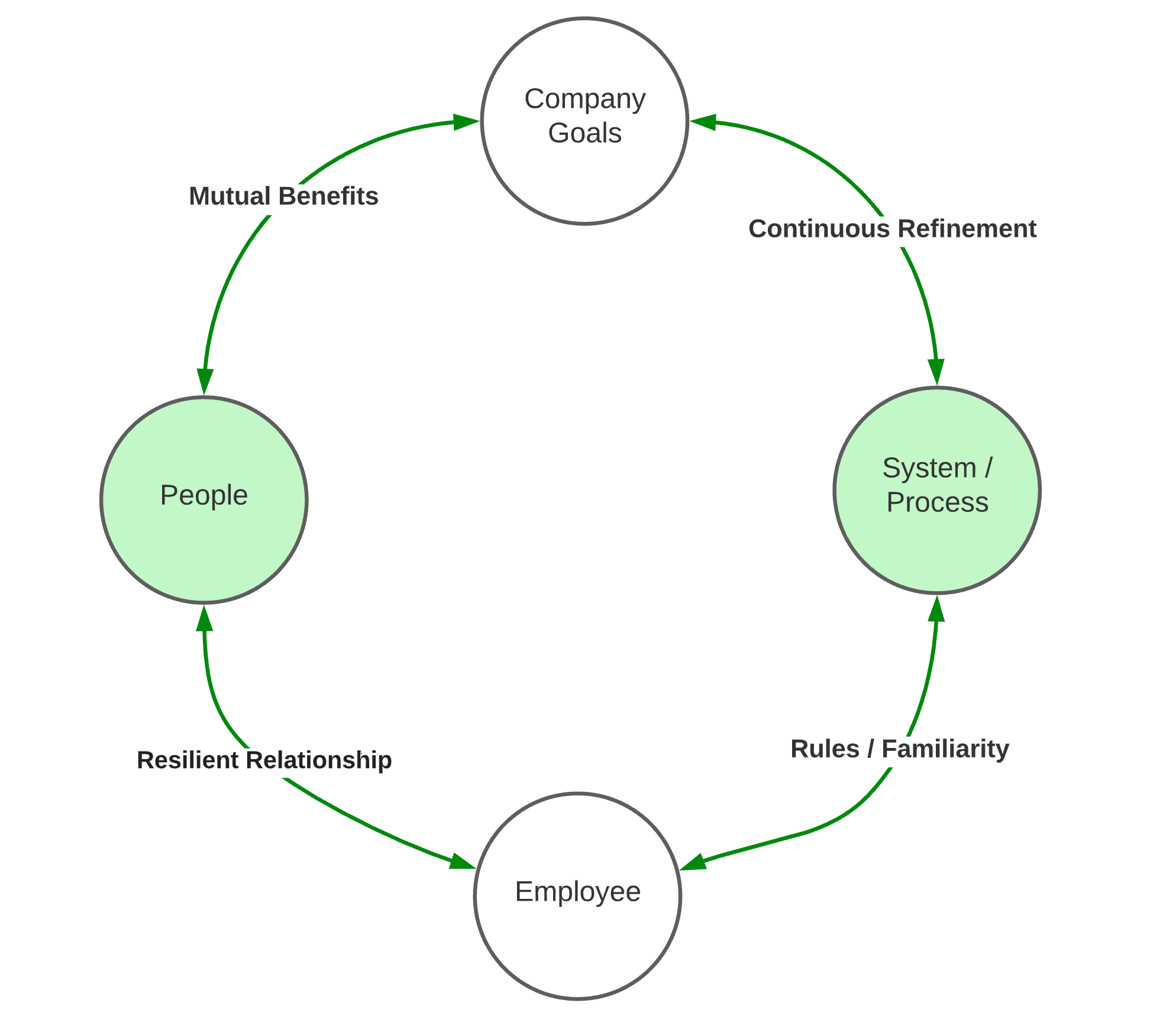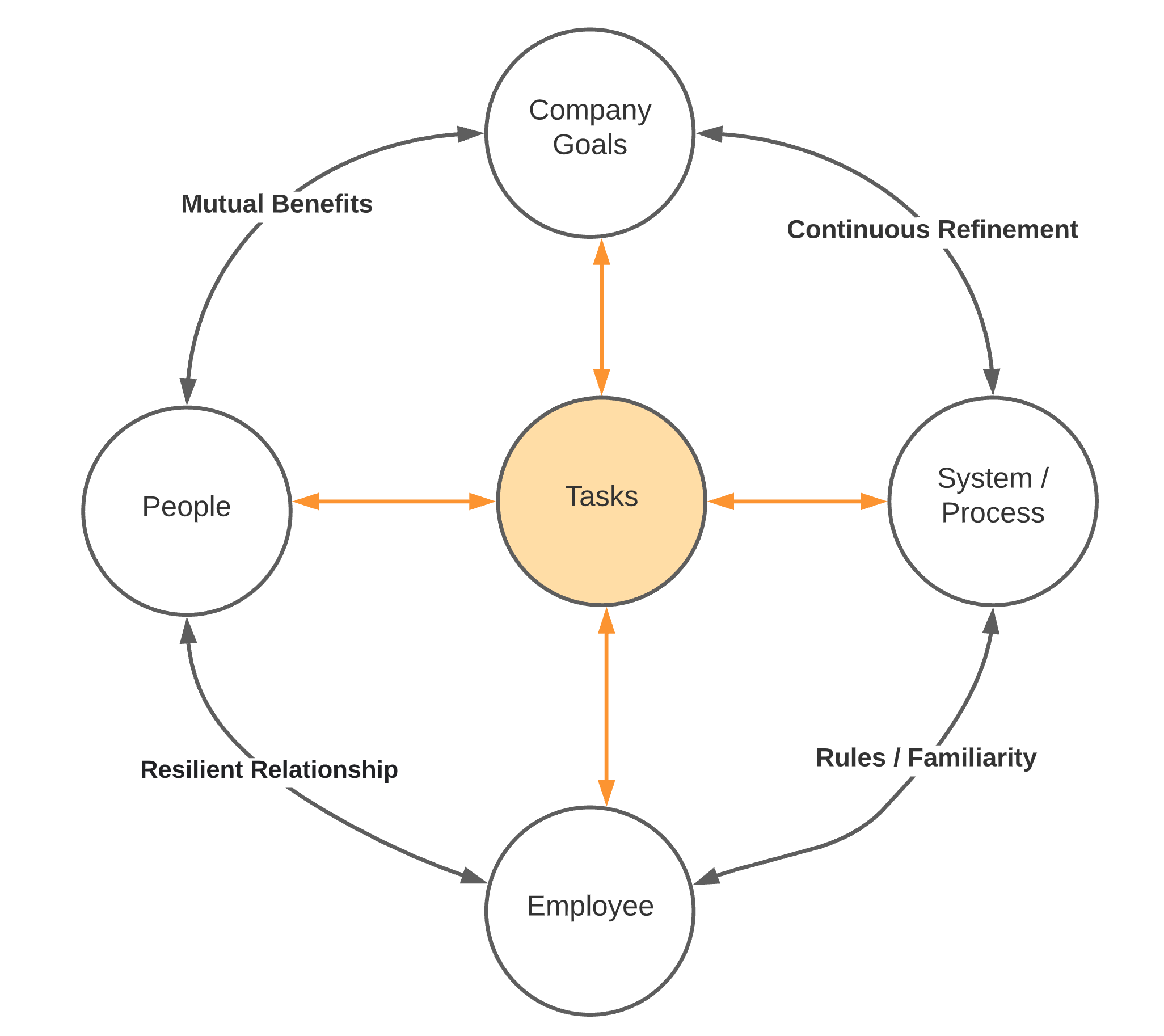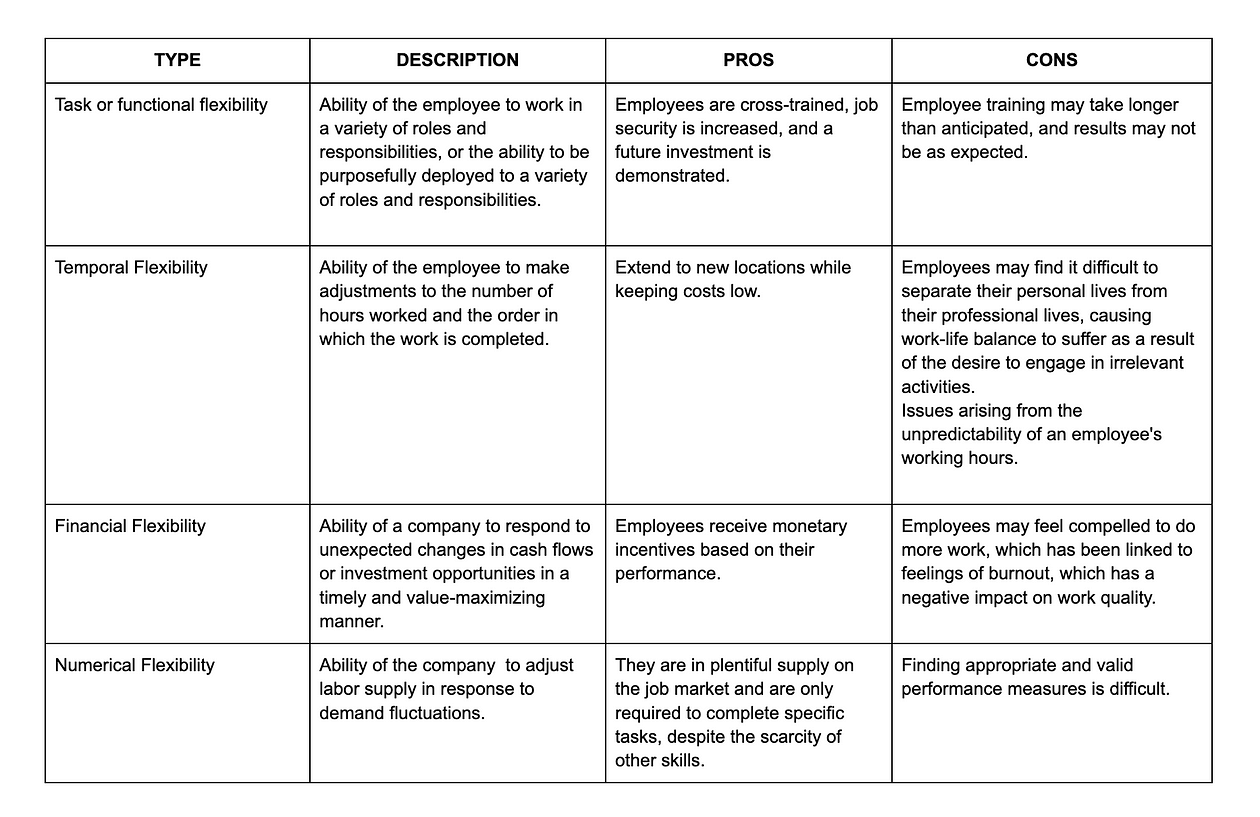People who are skilled and challenged at work are happier, stronger, more creative, and satisfied. Paradoxically, they would prefer to work less and spend more time doing things they enjoy because they tend to feel sad, weak, and dull if their skills aren’t being optimized.
Working on tasks that against the employee’s will is also a factor of dissatisfaction. When employees are investing in a task against their will, it is as if their limited psychic energy is being wasted.
In the system design and development life cycle, there are functional and non-functional requirements that must be met to have a working and secure software. Non-functional requirements are operational constraints and capabilities to achieve functional requirements — the features or functions that are expected to be present in the software.
At work, functional requirements are the task that employee needs to fulfill while non-functional requirements are the mechanism to help the employee perform their tasks.


From these functionalities, we can draw three common types of employee dissatisfaction:
- Lack of tasks variety and challenge.
- Conflicts with other people on the job
- Burnout — too much pressure, too much stress, little time to think for oneself, and little time to spend with the family.
Variety and challenges depend on how one perceives opportunities, solely depending on the person’s approach to it, but it’s the manager’s job to align appropriate tasks to the employee’s skill: too much challenge might bore them, otherwise will strain them.
Conflict at work is frequently caused by a person’s defensiveness, which stems from a fear of losing face. Since others also have an agenda for their own goals, the best way to get out of this bind is to agree on a common goal or set an expectation and discuss the different forms of achieving it.
Stress and pressures are unquestionably the most subjective aspects of a job, and thus the ones that should be the easiest to manage. Stress only exists when we experience it. Company solutions to relieve stress can be the delegation of responsibility, and better communication with the employee involved. Solution outside work can be improved home life, leisures, internal disciplines like exercise, yoga or meditation.
This three common dissatisfaction, if not addressed, can be a hindrance in developing an optimal experience in a workplace.
Generating optimal experience in the flexible workspace is never easy because most management has to care for productivity first and foremost and union leaders have to keep safety, security, and compensation.
Optimal Experience or flow is said to be the definition of one having a high quality of life. Though flow is a subjective evaluation of one’s own capacity, a workplace can be redesigned to attract a resemblance of flow state to some employee activities.
Csikszentmihalyi, one of the pioneers who explored optimal experience, describes eight characteristics of flow. We can think of this list as a psychological aspect of the tasks we assign to our employees.
- Complete concentration on the task;
- Clarity of goals and reward in mind and immediate feedback;
- Transformation of time (speeding up/slowing down);
- The experience is intrinsically rewarding;
- Effortlessness and ease;
- There is a balance between challenge and skills;
- Actions and awareness are merged, losing self-conscious rumination;
- There is a feeling of control over the task.
What makes Work Arrangement Flexible?
The more autonomy people have, the more freedom they have to choose where they work when they work, and with whom they work. This is a common misconception about flexibility at work. Flexibility arrangements can be grouped into four areas:

- Task or functional flexibility — job boundaries.
- Temporal Flexibility — project-based, hourly compensation, overtime
- Financial Flexibility — performance-related pay, profit-sharing, fee-for-service payments, individual contractor.
- Numerical Flexibility — part-time working, individual contractor, sub-contracting.
Individual commitment to the company is aided by work flexibility. Tasks and work time are two crucial elements in assisting the company in moving the flywheel. Functional flexibility and numerical flexibility are the most significant areas where optimal experience can be redesigned; freedom is their common denominator.
Positive Liberty VS Negative Liberty
Isaiah Berlin in his 1958 lecture “Two Concepts of Liberty” introduced Negative Liberty and Positive Liberty.
Negative liberty is the ability to be free “from” external constraints and interference. The freedom “to” pursue opportunities and shape your own destiny is known as positive liberty.
The reason for using these labels is that negative liberty appears to be the absence of something (i.e., obstacles, barriers, constraints, or interference from others), whereas positive liberty appears to necessitate the presence of something (i.e. of control, self-mastery, self-determination or self-realization).
Both concepts of liberty are valid human ideals, according to Berlin, and both forms of liberty are required in any free and civilized society, however, a common company setup faces a challenge since the traditional leadership style continues to impose various types of constraints in order to maintain control over its resources, such as time and people, resulting in limited opportunities.

How can one attain both liberties while still achieving the company’s objectives? Adam Grant suggests bounded flexibility — freedom within limits. In his WorkLife TED podcast, Adam discussed three different principles to attain flexibility at work:
- Make a commitment. To become a member of a team, you must make a commitment.
- Build Trust. Flexibility isn’t given to you automatically; you have to work for it. You must maintain your commitment to building trust and confidence; you have to build credibility.
- Take a calculated risk. Take calculated risks that will not sink the ship. If you can’t make it on your own, seek assistance. You have the freedom to try new projects and work without interference from leaders and managers as long as you commit to advancing company goals, communicating your progress, and raising a flag if you get too close to the waterline.
It would be a mistake to assume that everyone on the team will enjoy themselves while practicing these principles. In some phases of your work, you will be subjected to demands from others. How can we give people the freedom to manage their own time and priorities without jeopardizing their performance?
People want more than the option of working where they want; they want the option of working when they want. What we really need is predictability, not just flexibility. Adam continues to share the three types of predictable time:
- Quiet Time — time free of emails, meetings, and meetings that should have been emailed for creative and analytical work. It’s a time when you’re willing to be interrupted. By limiting meetings in the afternoon, employees will have more time in the morning to complete their tasks.
- Collaboration time — it is critical to determine when each team member must be available. It’s also crucial to consider who should be invited.
- Time off — Predictable time off is also important to the employee, and this helps with retention.
Productive conversations, clear deliverables, and improved relationships can be a result of optimizing experience in a flexible workplace.
Giving people more freedom sounds like a risk but squashing their freedom is also a risk. Talented people are the first to walk away. — Adam Grant
The goal of every conversation is not just to solve the problem right away, but to identify the existing processes that are causing people to work overtime and discuss how to change them.
Flexibility does not imply renouncing control of the company; rather, it entails giving employees a say in how they spend their time, as well as the freedom to experiment, fail, learn and experience flow.
Flow is present in every activity — task variety, appropriate and flexible challenges, clear goals, and immediate feedback are all important components of flow. The sooner we recognize the value of redesigning workplaces for flow, the better we will be able to improve an extremely important aspect of employee work-life balance.

